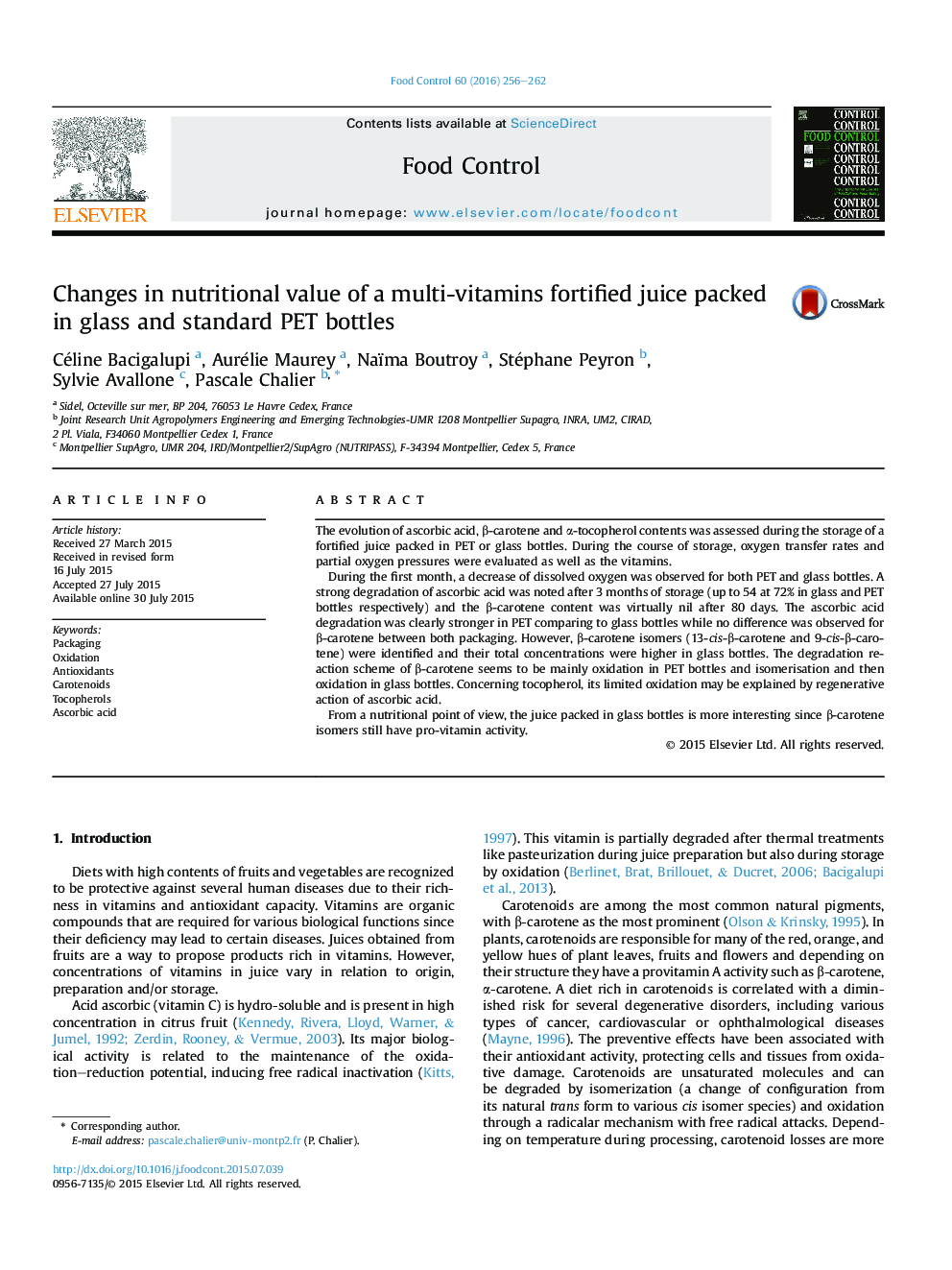| Article ID | Journal | Published Year | Pages | File Type |
|---|---|---|---|---|
| 6390265 | Food Control | 2016 | 7 Pages |
â¢Nutritional properties of juice packed in glass or PET bottles.â¢Ascorbic acid strongly decreases in presence of tocopherol.â¢Regenerative action of ascorbic acid.â¢Oxidation of carotenes in PET and isomerization in glass bottles.
The evolution of ascorbic acid, β-carotene and α-tocopherol contents was assessed during the storage of a fortified juice packed in PET or glass bottles. During the course of storage, oxygen transfer rates and partial oxygen pressures were evaluated as well as the vitamins.During the first month, a decrease of dissolved oxygen was observed for both PET and glass bottles. A strong degradation of ascorbic acid was noted after 3 months of storage (up to 54 at 72% in glass and PET bottles respectively) and the β-carotene content was virtually nil after 80 days. The ascorbic acid degradation was clearly stronger in PET comparing to glass bottles while no difference was observed for β-carotene between both packaging. However, β-carotene isomers (13-cis-β-carotene and 9-cis-β-carotene) were identified and their total concentrations were higher in glass bottles. The degradation reaction scheme of β-carotene seems to be mainly oxidation in PET bottles and isomerisation and then oxidation in glass bottles. Concerning tocopherol, its limited oxidation may be explained by regenerative action of ascorbic acid.From a nutritional point of view, the juice packed in glass bottles is more interesting since β-carotene isomers still have pro-vitamin activity.
